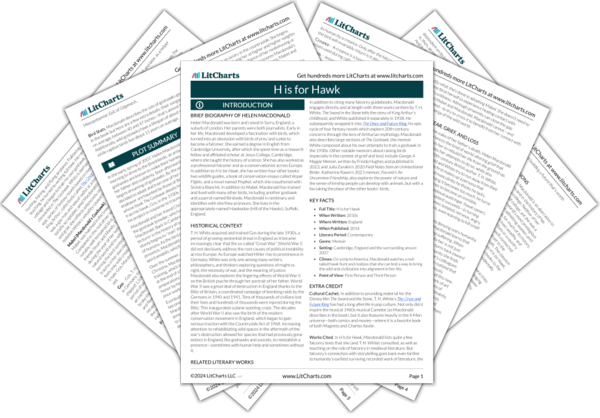What impresses Macdonald in the breeder is the way that he controls Mabel not through cruelty or excessive force but through gentleness and care. He exemplifies the relationship she wants to have with her bird, one which ties the animal and the human together with the invisible bonds of love and trust at least as much as with the physical bonds of jesses and creances. Macdonald will also return to this moment in the next chapter, with another interpretation of the moment.
